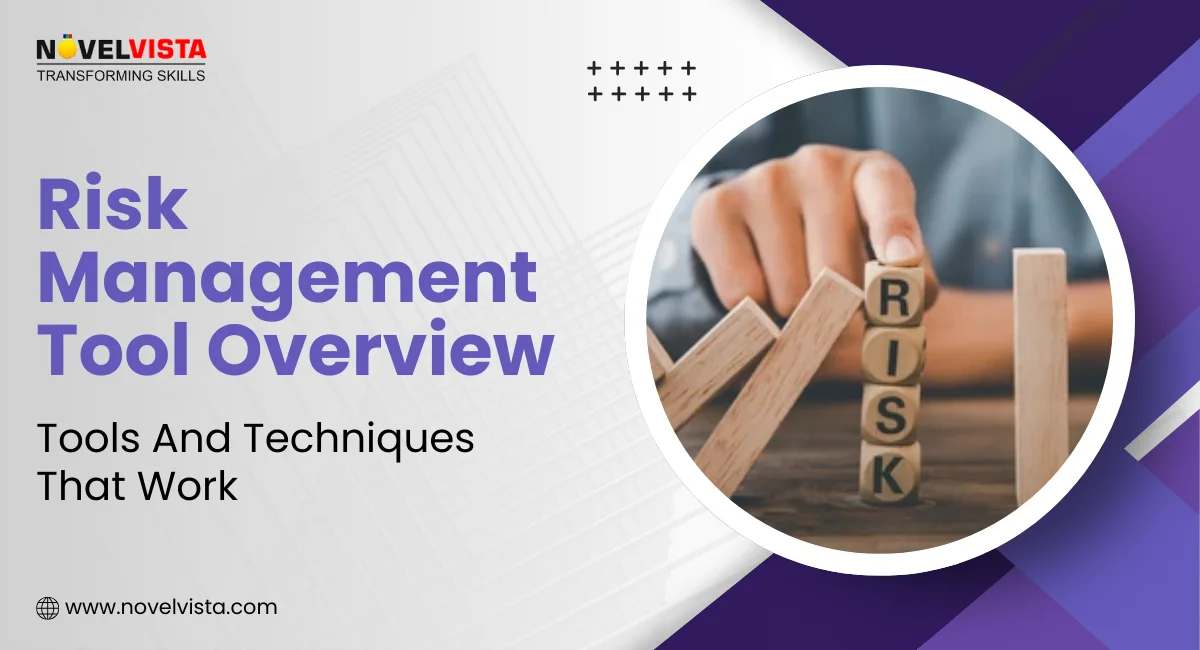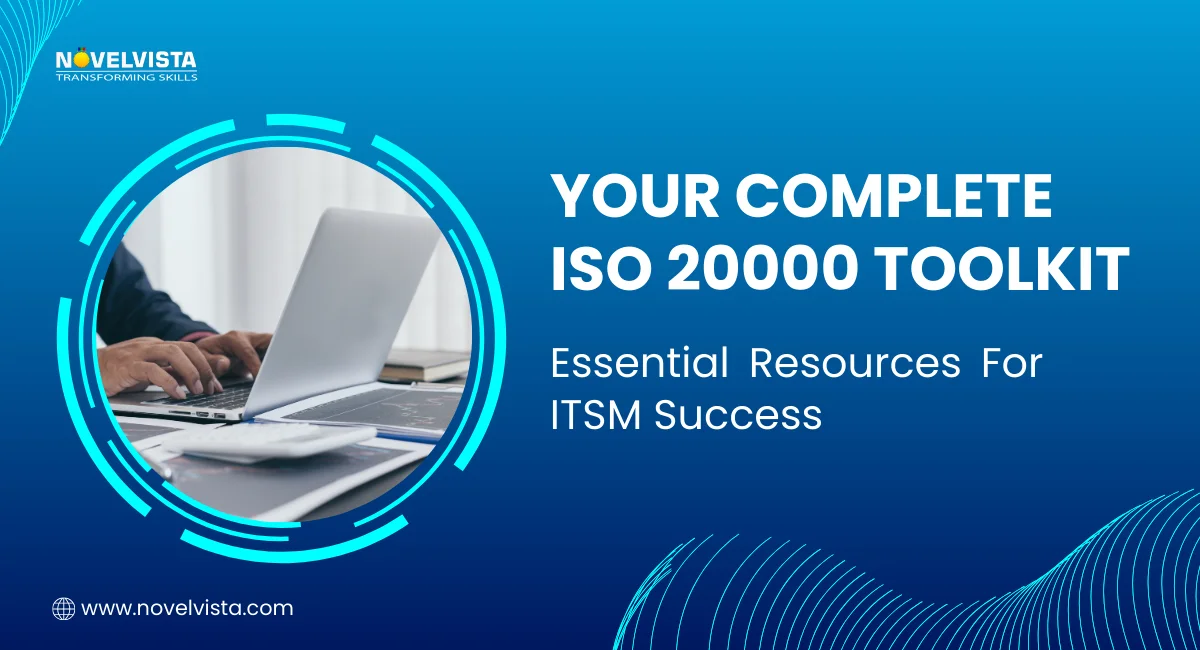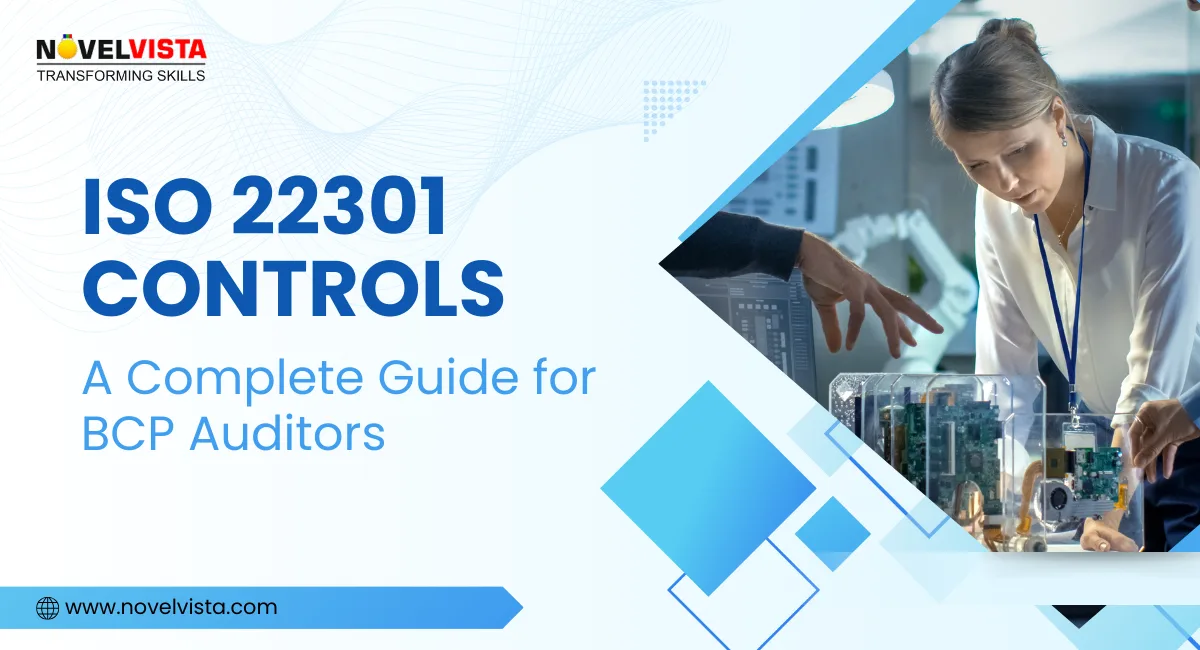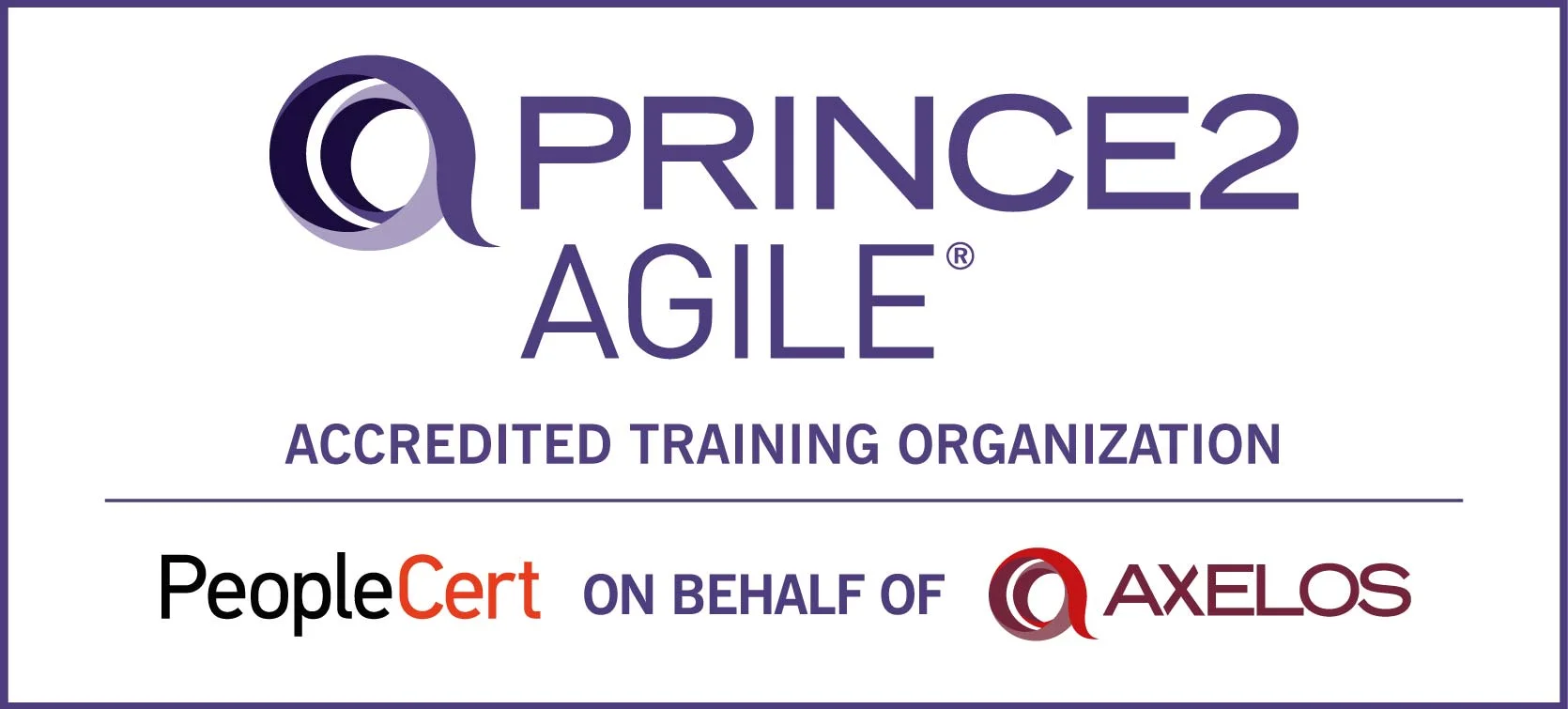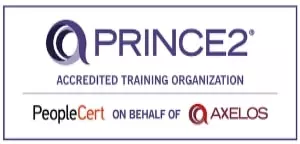Many IT teams work hard but still end up dealing with repeated service issues, unclear responsibilities, and customers who feel things could be better. When everyday work feels scattered, the idea of using iso 20000 principles brings much-needed structure. These principles give IT teams a simple way to deliver steady, predictable, and customer-friendly services without adding extra complexity.
This article will walk you through what the principles mean, how the iso 20000 principles framework and process support better service delivery, and why these ideas are trusted by teams that want more consistent results. Everything is explained in a clear, friendly, and easy style so you can use it right away.
What Are ISO 20000 Principles?
Iso 20000 principles are straightforward rules that guide how IT services should be planned, delivered, and improved. They remove guesswork and help teams build processes that work the same way every time. When you use these ideas, services become more stable, customers face fewer issues, and teams work with more clarity. The iso 20000 principles and guidelines also encourage a service mindset where each task supports reliability, teamwork, and better customer experience.
These principles come from years of global best practices. They aren’t theories written in isolation. We’ve watched teams adopt them and instantly notice better clarity, smoother communication, and fewer customer complaints. That’s why ISO 20000 remains one of the most dependable ITSM frameworks worldwide.
ISO 20000 Key Principles You Must Know
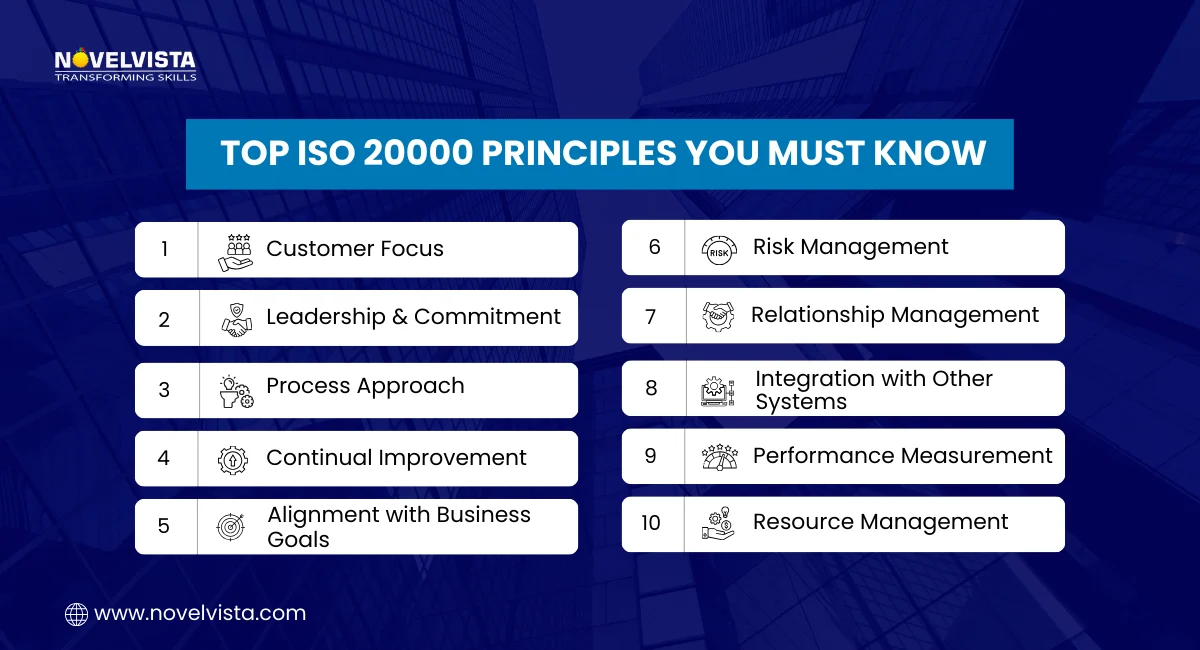
Here’s a clear look at the iso 20000 key principles, each kept simple and easy to understand.
1. Customer Focus
This principle ensures that every service is shaped around customer needs. Teams learn what users expect and design services that consistently meet those expectations. It helps reduce misunderstandings and builds trust through steady performance.
2. Leadership & Commitment
Strong direction from leaders keeps service management on track. When leaders support the goals, remove blockers, and guide teams with clarity, services stay more organized and aligned with what the business needs.
3. Process Approach
Work becomes smoother when it follows defined steps. This principle encourages teams to use structured processes instead of scattered actions, reducing errors and making service delivery more predictable and dependable.
4. Continual Improvement
Services stay relevant only when they keep improving. This principle guides teams to review their work, find small gaps, and fix them regularly. Over time, these small improvements make services more stable and easier to manage.
5. Alignment With Business Goals
This keeps IT connected to the business mission. When services support business goals, every improvement feels meaningful, and IT becomes a partner in driving growth and results.
6. ISO 20000 Risk Principles (Risk Management)
The iso 20000 risk principles help teams spot issues before they cause trouble. By identifying risks early and preparing for them, service disruptions become less frequent and easier to control.
7. Relationship Management
Good coordination between teams, vendors, and customers reduces delays and confusion. This principle supports smooth communication and stronger partnerships that improve service results.
8. Integration With Other Management Systems
IT services often connect with systems like security, quality, or compliance. This principle ensures all these areas work together so processes don’t clash or cause gaps in service delivery.
9. Performance Measurement & Reporting
Tracking performance gives teams real data about what’s working and what needs attention. This principle encourages clear reporting so decisions are based on facts instead of assumptions.
10. Resource Management
Services run better when people, skills, tools, and time are managed wisely. This principle ensures resources are available and used correctly, helping teams avoid service gaps and delays.
These principles match the common patterns we observe in strong IT service teams. Whether it’s a small team managing internal support or a large enterprise running complex operations, the same habits keep appearing: clear processes, steady communication, and predictable delivery. ISO 20000 wraps these habits into an easy-to-follow structure that works in any environment.
Why Following ISO 20000 Principles Matters
Using iso 20000 principles helps IT teams shift from reactive work to steady, planned service delivery. Services become easier to manage, and customers get a smoother experience because the way work is done becomes consistent.Here’s how these principles help in real situations:
- More stable services: Clear processes reduce repeated issues and confusion.
- Better teamwork: Everyone knows their role and follows the same path.
- Stronger customer trust: Predictable service builds confidence over time.
- Fewer disruptions: The iso 20000 risk principles help teams prepare for issues early.
- Smarter decision-making: The iso 20000 principles framework and process give structure, helping teams understand what to fix and how to improve.
When teams use the iso 20000 key principles and follow the iso 20000 principles and guidelines, service delivery becomes smoother, easier to scale, and more aligned with business goals.
These benefits come directly from what we notice in real service desks and IT operations teams. When everyone follows the same principles, escalations drop, responsibilities become clearer, and decisions take less time. These improvements are consistent across industries, which is why ISO 20000 remains a trusted reference for mature IT teams.
Want the complete list of advantages? Check out our detailed blog on ISO 20000 benefits and how it strengthens IT service quality across every function.ISO 20000 Principles Quick Start Checklist
Get a simple one-page checklist to assess your ISO 20000 readiness and strengthen your ITSM foundation instantly.
Conclusion: Master the Principles for Better ITSM
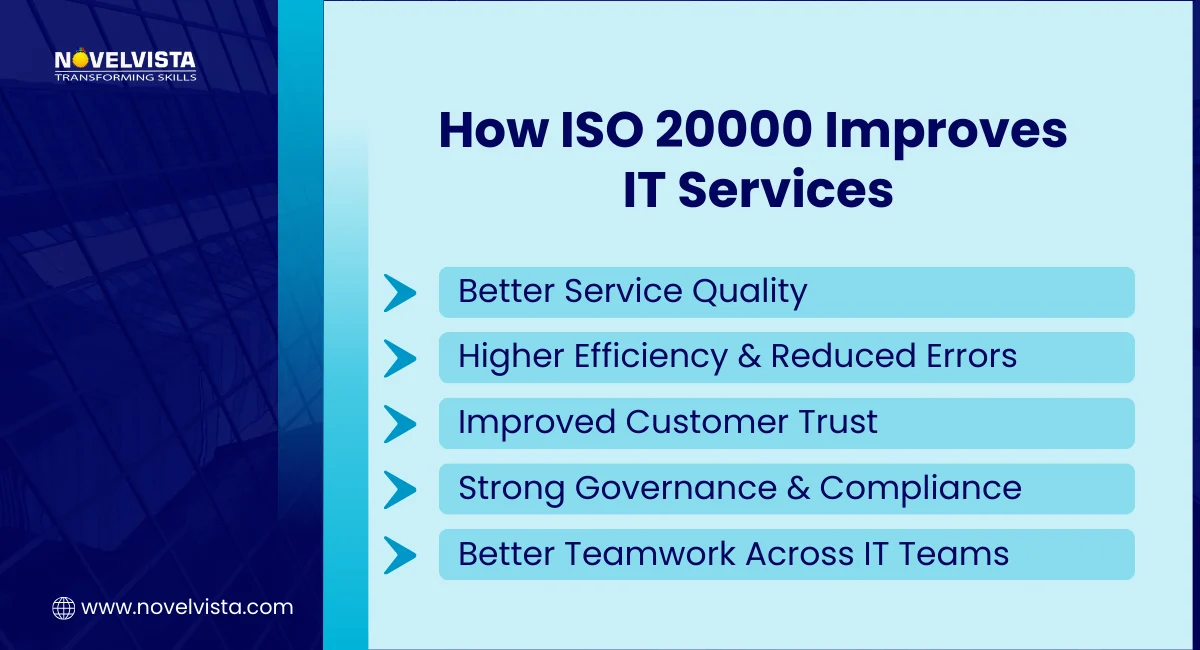
Working with iso 20000 principles gives any IT team a steady way to build services that feel reliable, organized, and customer-friendly. These ideas remove repeated confusion, help teams follow the same direction, and create a setup where work flows with less stress. When you follow the iso 20000 key principles, teamwork improves because everyone understands how their tasks connect.
The iso 20000 principles and guidelines also keep services aligned with business goals, so every improvement adds real value. Over time, this approach reduces service failures, strengthens customer trust, and makes IT services easier to manage. It’s a simple and effective path toward stronger IT service management.
Next Step
Take your IT service management skills to the next level with the ISO 20000 Lead Auditor Certification by NovelVista. This program helps you learn how to audit, apply, and improve ITSM frameworks using real project scenarios. If you want a deeper understanding of these principles and how to use them in actual environments, this is the right place to begin. Build skills that companies trust and prepare for global auditing and consulting opportunities.
Frequently Asked Questions
Author Details

Mr.Vikas Sharma
Principal Consultant
I am an Accredited ITIL, ITIL 4, ITIL 4 DITS, ITIL® 4 Strategic Leader, Certified SAFe Practice Consultant , SIAM Professional, PRINCE2 AGILE, Six Sigma Black Belt Trainer with more than 20 years of Industry experience. Working as SIAM consultant managing end-to-end accountability for the performance and delivery of IT services to the users and coordinating delivery, integration, and interoperability across multiple services and suppliers. Trained more than 10000+ participants under various ITSM, Agile & Project Management frameworks like ITIL, SAFe, SIAM, VeriSM, and PRINCE2, Scrum, DevOps, Cloud, etc.
Course Related To This blog
ISO 20000:2018 Lead Auditor
Confused About Certification?
Get Free Consultation Call



